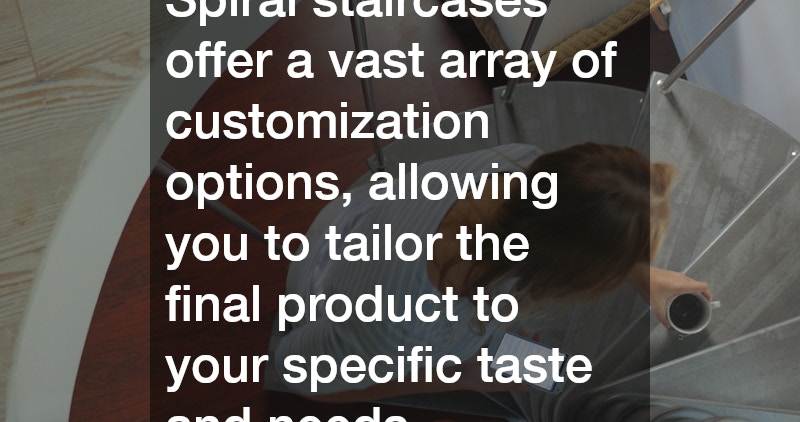When planning to install a spiral staircase in your home or business, it’s crucial to understand several key aspects of the process. This guide will cover essential information that will help you prepare for initial consultations with a spiral staircase builder. Spiral staircases are not only a functional architectural feature but also add aesthetic value to any space.
However, choosing the right design and builder requires attention to numerous details.
Understanding the Costs Involved
The cost of installing a spiral staircase can vary significantly based on several factors. These include the materials chosen, the complexity of the design, and the specific conditions of the installation site. For example, a simple metal spiral staircase may be more affordable compared to an intricately designed wooden one with glass elements. Additionally, costs may also be influenced by the geographic location and the builder’s level of experience and reputation.
One of the primary costs in building a spiral staircase is the materials. Common materials include wood, steel, cast iron, and glass—each offering different aesthetic and functional benefits. Steel and iron are popular for their strength and durability, while wood can provide a more traditional and warm look. The choice of material will significantly impact the overall budget. It’s essential to discuss these options with your builder to understand the cost implications thoroughly.
Labor costs are another significant component of the overall budget. The complexity and duration of the installation process can vary, influencing the labor expenses. A well-established builder might charge more, but they bring experience and reliability to the project, potentially saving on costly mistakes or delays. Discussing all these aspects with your builder during the consultation can provide a clearer picture of the financial commitment required.
Customization Options Available
Spiral staircases offer a vast array of customization options, allowing you to tailor the final product to your specific taste and needs. From choosing the baluster style to selecting the color scheme, each component of the staircase can be customized. This flexibility ensures that the staircase not only fits seamlessly into your space but also enhances its visual appeal. Customization also allows for practical adjustments, such as altering the diameter or rise height to better suit your space.
With advancements in technology, many spiral staircase builders now offer 3D rendering services, which can provide a virtual preview of the finished product. This feature is incredibly useful in visualizing how different design elements, such as handrails, treads, and finishes, will work together. Choosing a design that complements your home’s interior or exterior design is an essential part of the customization process. Discussing these options with your builder will ensure that the final product meets all your personal and aesthetic preferences.
Beyond visual aesthetics, customization also extends to functional features. Depending on your needs, you may want to include elements like non-slip treads, economy of space designs, or additional safety railings. It’s important to balance the staircase’s artistic attributes with these functional considerations. Engaging in thoughtful discussions with your builder regarding customization will help in crafting a staircase that marries utility with elegance.
Timeline for Completion
The timeline for completing a spiral staircase installation can vary based on multiple factors such as the complexity of the design, availability of materials, and the efficiency of the builder. Generally, you can expect the process from initial consultation to final installation to take several weeks to a few months. Understanding this timeline is crucial for planning purposes, especially if the installation is part of a larger renovation project.
Several stages in the process can affect the timeline, including design finalization, material procurement, and fabrication. Custom designs may require additional time for 3D modeling and adjustments. Likewise, sourcing unique or imported materials could extend the procurement stage. Discussing these variables with your builder during the consultation phase can provide a more accurate timeline, allowing you to manage expectations and plan effectively.
Unexpected delays can occur due to unforeseen site conditions, weather events, or changes in design scope. To minimize disruptions, clear and frequent communication with your builder is key. Prioritize working with builders who provide detailed project schedules and regular updates. This proactive approach not only helps to keep the project on track but also ensures that any arising issues can be addressed promptly, reducing overall installation time.
Conclusion
Understanding these important aspects will ensure a smoother experience when working with a spiral staircase builder. Adequate preparation and clear communication are key to achieving a beautiful and functional addition to your space. By having a solid grasp of costs, customization, and timelines, and by collaborating effectively with your builder, you can ensure that your spiral staircase project meets your expectations and enhances your living or working environment.

